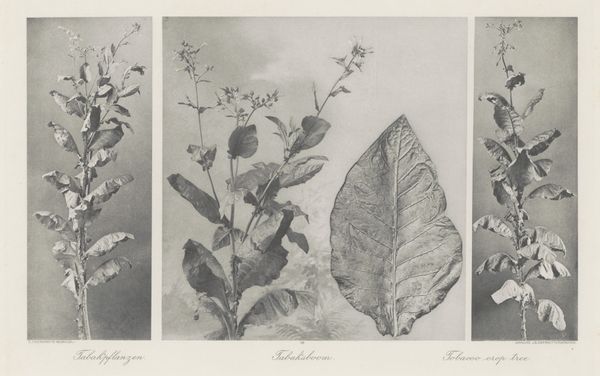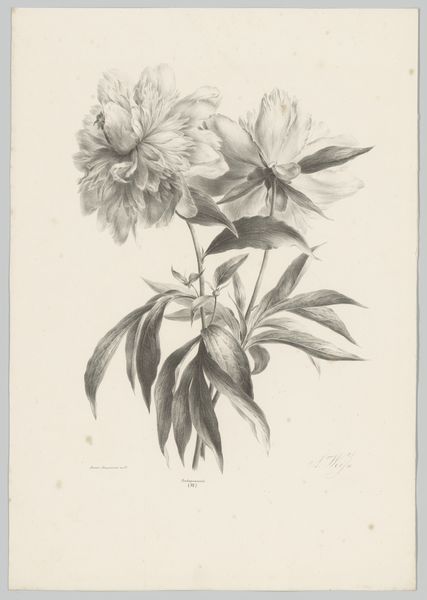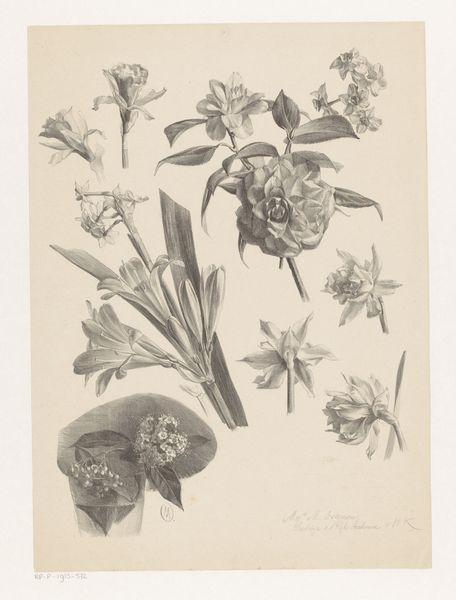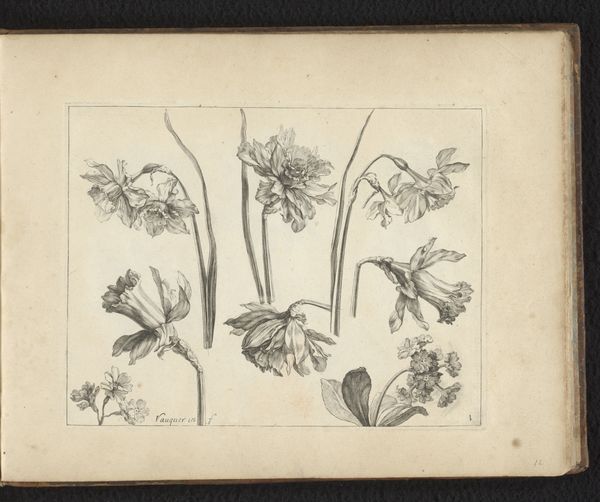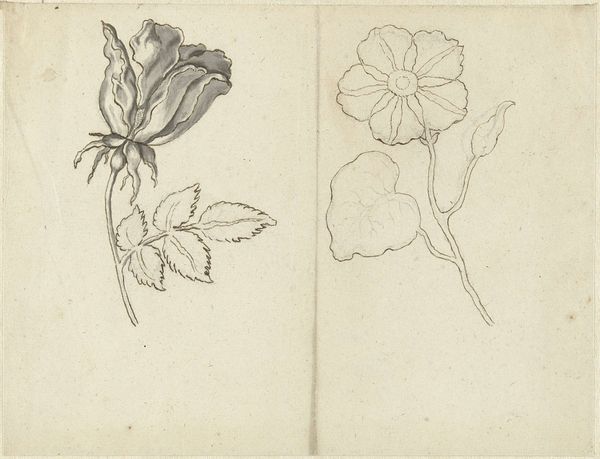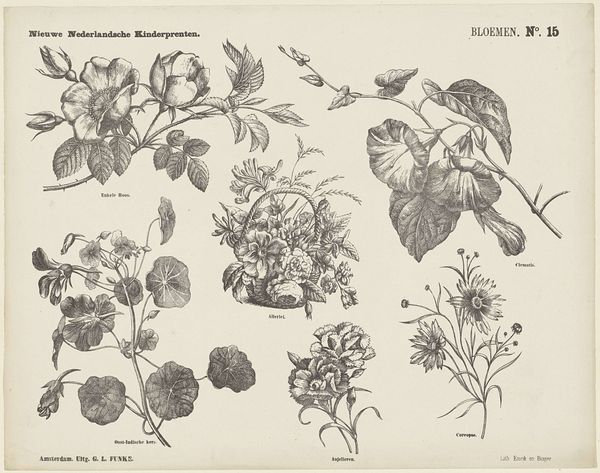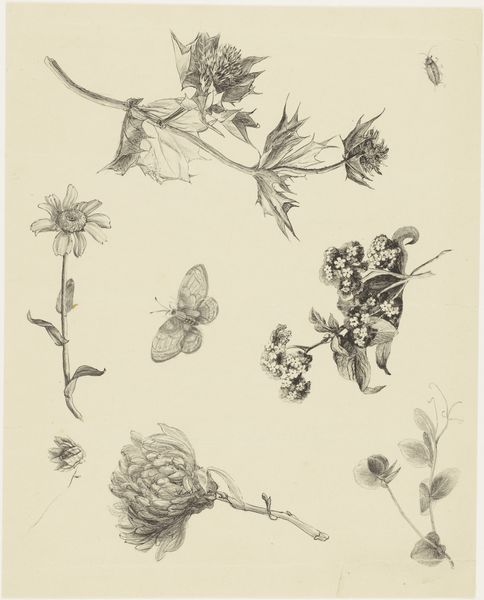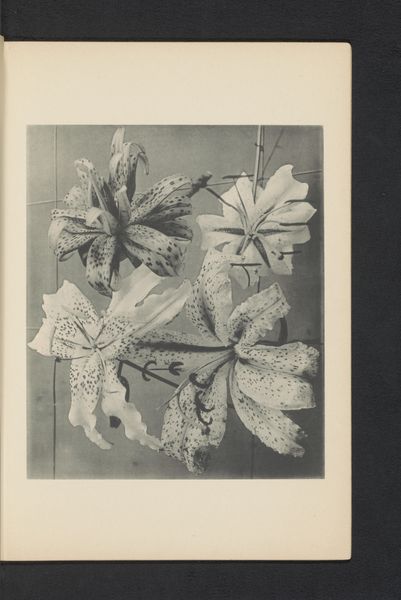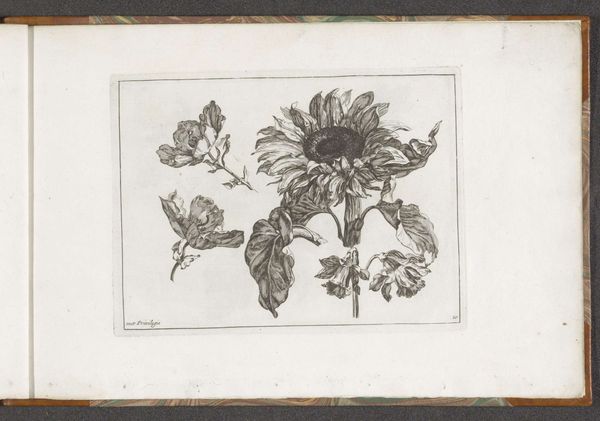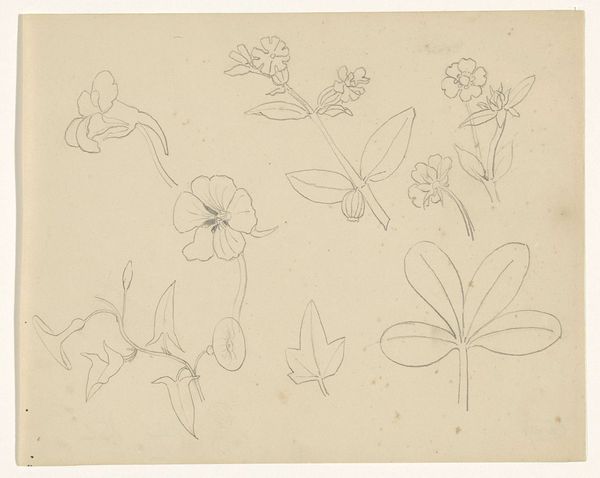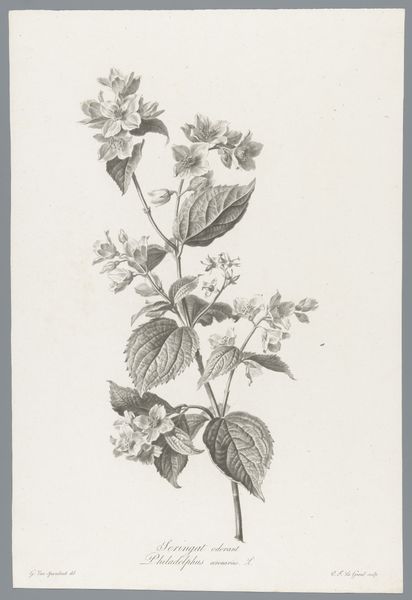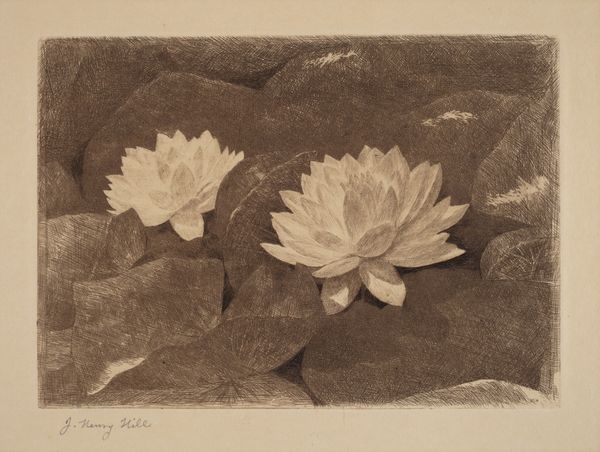
drawing, paper, pencil, graphite
#
drawing
#
organic
#
etching
#
paper
#
organic drawing style
#
linocut print
#
pencil
#
line
#
graphite
#
realism
Dimensions: height 227 mm, width 287 mm
Copyright: Rijks Museum: Open Domain
Editor: Here we have "Flowers and Leaves" by Theo van Hoytema, dating from 1878 to 1917. It's a collection of graphite and pencil drawings, perhaps studies, on paper. There’s an almost scientific quality to their realism. What do you see in this piece beyond its botanical accuracy? Curator: Beyond their immediate naturalism, these depictions possess a layered symbolism deeply embedded in Dutch art traditions. Note how Hoytema gives prominence to specific details; a curling leaf, a flower’s heart. Consider how botanical illustrations often functioned not merely as records, but as coded messages reflecting morality and temporality. Does the contrast of a dark etched field of black against the flower draw your attention? Editor: Absolutely. It almost feels like a memento mori, especially with the varying stages of bloom and decay. Curator: Precisely. Look at the wilting edges of the leaves. Such careful observation invites us to meditate on cycles of life, but also potentially to identify what specific emotional valences were attached to these plants culturally. For instance, the style is reminiscent of late 19th century occult movements in which nature became a sort of visual language to codify secrets, do you pick up on any sort of encrypted visual message? Editor: It’s fascinating to consider how the artist uses these ordinary elements to represent such loaded meanings. I would have just seen pretty plants, otherwise. Curator: Our understanding of visual culture is inevitably enriched when we begin to ask 'What else could this mean?'. It invites curiosity to learn more about an era, including how symbols shifted depending on social setting or aesthetic intent. Editor: So, seeing art this way reveals history, emotion, and maybe a little secret knowledge hidden within the lines. Curator: Precisely. Art, often a carrier of time and cultural memory, invites the viewer to excavate those encoded meanings.
Comments
No comments
Be the first to comment and join the conversation on the ultimate creative platform.
